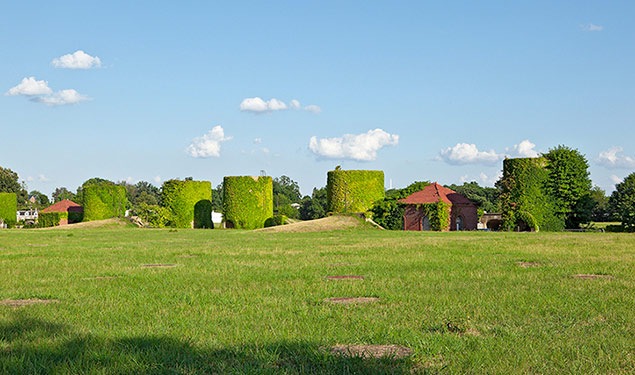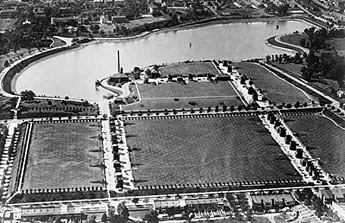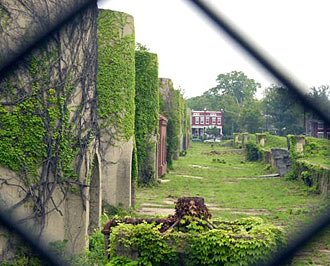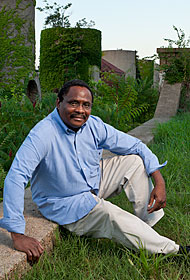

Photograph © Roger Foley
With grounds planned by Frederick Law Olmstead's [sic] son, the reservoir served as a park at the beginning of the last century. On hot summer nights, residents slept on the grassy banks, tickled by balmy breezes. — Lyndsey Layton, “What to Do With What Lies Beneath?” Washington Post (2006)
History of McMillan Park

Circa 1920. Courtesy McMillan Park Committee
The completion of Washington, D.C.’s reservoir slow sand filtration site in 1905 was a public health milestone that provided safe potable water to the growing capital and was, as the largest of its type in the U.S., a major engineering achievement. The innovative system of water purification eliminated typhoid epidemics and reduced other communicable diseases in the city.
The McMillan Park Reservoir Sand Filtration site, as it came to be known, was strategically located within the district, on axis with the U.S. Capitol Grounds. The 25-acre site was intended to be a large permanent reserve of open green space for the benefit of citizens and was as part of a regional parks and parkway system laid out in the 1901 McMillan Plan. The utilitarian landscape became a civic monument and memorial to Senator James McMillan, who heavily influenced the city’s 20th century development.
The site’s design and construction was the collaboration of landscape architect Frederick Law Olmsted, Jr., engineer Allen Hazen, sculptor Herbert Adams, and architect Charles Platt. Above-ground regulator houses and two rows of iconic sand bin towers are the most visually striking of the pioneering technical features. Twenty underground sand filtration beds, constructed of non-reinforced concrete, are approximately one acre each in area. A grid of manholes once provided access to the filter cells now shed shafts of light into the vast spaces below.
The slow sand filtration system served its original purpose until 1986, when the Federal government moved to a rapid purification system. The General Services Administration sold the site to the District of Columbia in 1987. Community advocates, including steward Tony Norman, formed the McMillan Park Committee in response to immediate efforts to commercialize and extensively develop the site.
Members have advocated for National Historic Landmark status and adaptive reuse of historic McMillan Park through public testimony, meetings with community and civic groups, collaboration with local and national organizations, and rallying media contacts. Mr. Norman has become a recognized spokesperson and champion in advancing Senator McMillan’s legacy of cultural, architectural, engineering, and public health contributions to the nation’s capital and to the nation.
In 1991, the D.C. Historic Preservation Review Board designated McMillan Park a local Historic Landmark and nominated the site for inclusion in the National Register of Historic Places.

Threat
The site, which has been closed to the public since World War II, has deteriorated severely since operations ceased in 1987 despite more than 20 years of meetings and citizen proposals. The threat of development has intensified in the last few years as the City’s economic development office has selected a private development team and begun discussions on a potential large public subsidy for private development. Currently Mr. Norman and Committee members are engaging in pro bono consultations with engineers, preservation and environmental experts, legal experts and planners for advice on mitigating the negative effects of the proposed development and exposing the nontransparent collaboration of the District of Columbia government with the private development team. The Committee is exploring repurposing this public land and alternative stewardship arrangements such as a conservancy, public/private partnerships, or transfer of development rights.

